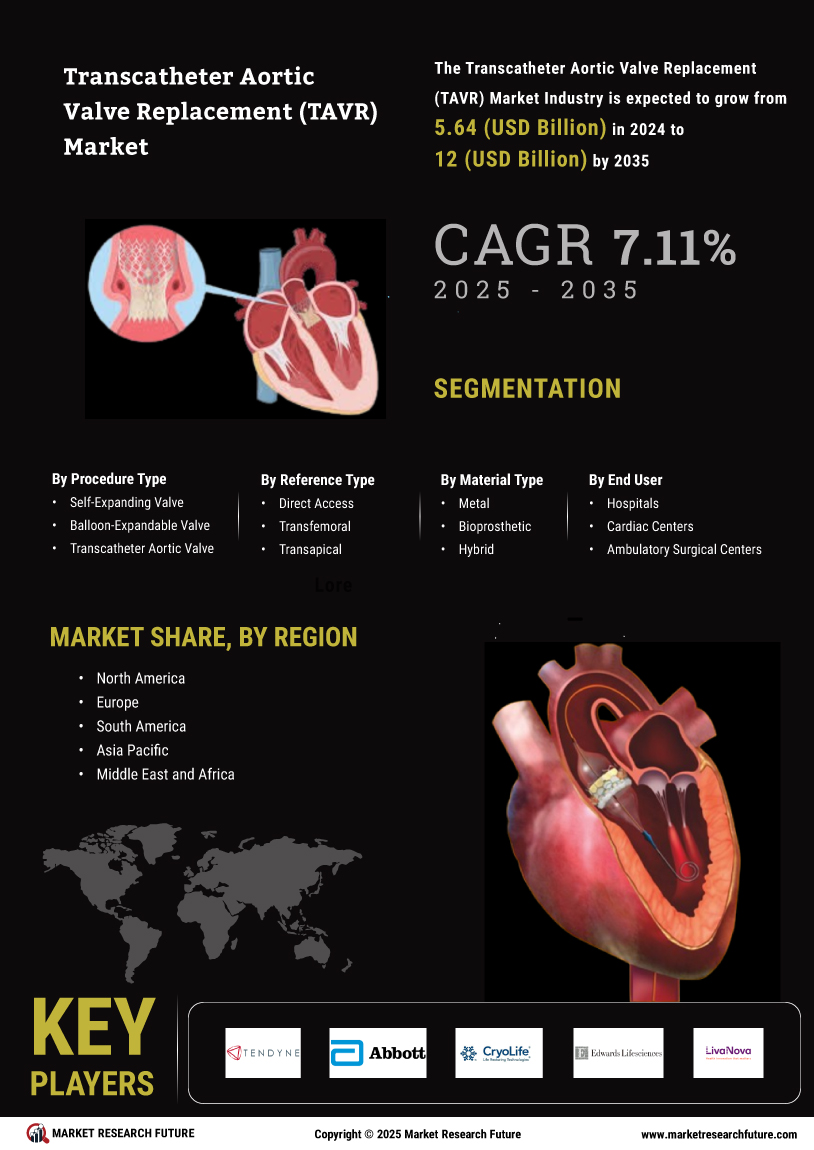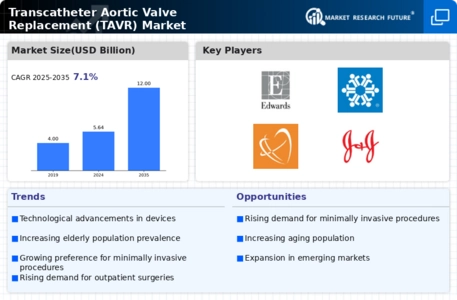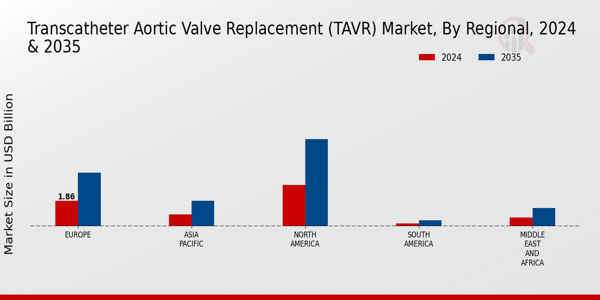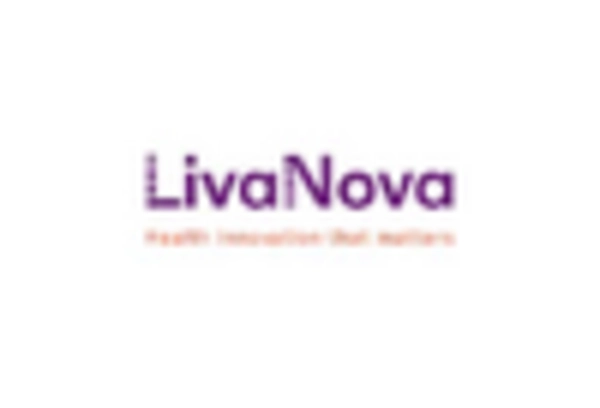Rising Awareness and Education
Rising awareness and education regarding aortic stenosis and TAVR procedures are significant drivers for the Transcatheter Aortic Valve Replacement (TAVR) Market. Increased efforts by healthcare professionals and organizations to educate both patients and providers about the benefits of TAVR are likely to lead to higher adoption rates. Educational initiatives, including seminars, workshops, and informational campaigns, are essential in dispelling misconceptions about the procedure. As patients become more informed about their treatment options, they are more likely to seek TAVR as a viable alternative to traditional surgery. This heightened awareness is expected to contribute to the growth of the TAVR market, as more patients advocate for less invasive treatment options.
Regulatory Support and Approvals
Regulatory support plays a vital role in shaping the Transcatheter Aortic Valve Replacement (TAVR) Market. Favorable regulatory frameworks and expedited approval processes for new devices encourage innovation and market entry. Regulatory bodies are increasingly recognizing the benefits of TAVR procedures, leading to streamlined pathways for device approval. For instance, recent approvals for new TAVR devices have expanded treatment options for patients with varying degrees of aortic stenosis. This regulatory environment not only fosters competition among manufacturers but also enhances patient access to cutting-edge therapies. As a result, the TAVR market is likely to experience sustained growth, driven by ongoing regulatory support and the introduction of novel devices.
Technological Advancements in TAVR
The Transcatheter Aortic Valve Replacement (TAVR) Market is experiencing rapid technological advancements that enhance procedural outcomes and patient safety. Innovations such as improved valve designs, delivery systems, and imaging techniques are pivotal. For instance, the introduction of next-generation valves with better hemodynamic performance is likely to increase adoption rates. Furthermore, advancements in minimally invasive techniques reduce recovery times, making TAVR a more appealing option for patients. According to recent data, the market for TAVR devices is projected to grow significantly, driven by these technological improvements. As healthcare providers increasingly adopt these innovations, the overall efficiency and effectiveness of TAVR procedures are expected to improve, thereby expanding the market further.
Increasing Incidence of Aortic Stenosis
The rising incidence of aortic stenosis is a critical driver for the Transcatheter Aortic Valve Replacement (TAVR) Market. As populations age, the prevalence of this condition is likely to increase, leading to a higher demand for effective treatment options. Data indicates that aortic stenosis affects approximately 2-7% of the elderly population, with this figure expected to rise as the global demographic shifts towards an older age group. This growing patient population necessitates innovative solutions like TAVR, which offers a less invasive alternative to traditional surgical valve replacement. Consequently, the increasing incidence of aortic stenosis is anticipated to propel the TAVR market, as healthcare systems seek to address the needs of this expanding patient demographic.
Investment in Healthcare Infrastructure
Investment in healthcare infrastructure is a crucial driver for the Transcatheter Aortic Valve Replacement (TAVR) Market. As healthcare systems worldwide allocate resources to enhance cardiovascular care, the availability of advanced TAVR technologies is likely to improve. Increased funding for hospitals and clinics to adopt state-of-the-art equipment and training for healthcare professionals can facilitate the implementation of TAVR procedures. Moreover, as healthcare facilities expand their capabilities, they are better positioned to offer TAVR as a treatment option. This investment trend is expected to bolster the TAVR market, as enhanced infrastructure supports the growing demand for minimally invasive cardiac interventions.


















Leave a Comment